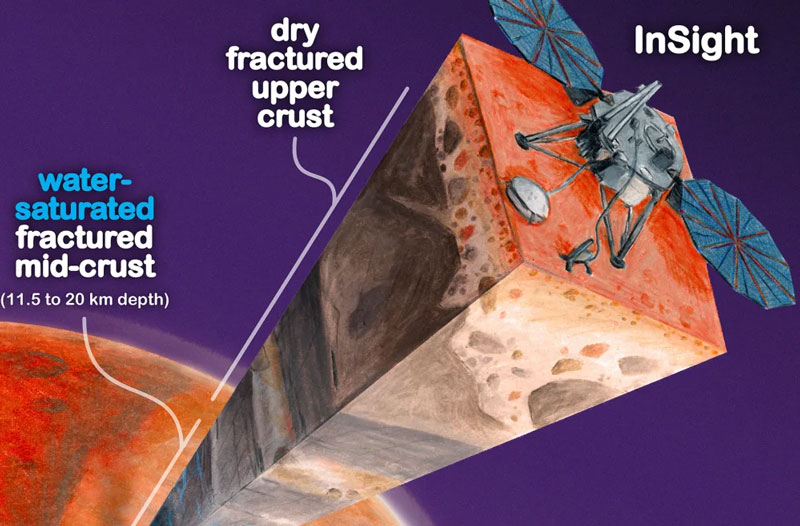NASA’s InSight Martian robotic probe has provided a wealth of data about the internal structure of the Red Planet and its geological and seismic activity. And although the station has not been operating since 2022, scientists continue to analyze the data it receives and make discoveries. In particular, the new study allows us to conclude that there is an extremely high saturation of liquid water in the middle crust of Mars in the landing area of the station. It’s there – on the oceans.

Image source: James Tuttle Keane/Aaron Rodriguez/Courtesy Scripps Institute of Oceanography
For now, and for quite some time, we will not be able to drill deep wells on Mars (we can drill relatively shallowly on Earth, too). Therefore, getting to potential water deposits on Mars will not be easy and this will not happen tomorrow. The estimated depth of aquifers on the Red Planet is 11–20 km. However, for now this is only a probability and modeling data. The scientists who conducted the study plugged InSight data into a physical model of the earth’s crust.
The presence of aquifers in the middle crust of Mars will provide more material for drawing conclusions about the ancient climate of Mars and understanding where this water went after Mars lost its atmosphere about 3 billion years ago. It was assumed that the water mostly evaporated after this, but if the modeling correctly reflects the situation, it simply seeped deep into the bowels of the planet. If the middle crust of Mars in this regard is the same throughout the planet, then water from these reserves could cover the planet with a layer up to 1.6 km deep.
However, the matter may not end with just wells if sometime in the future the task is set to extract water from the bowels of the planet. The same modeling explains that the water is not in lenses or huge underground reservoirs, but in rather small pores and cracks in the mantle. Seismic waves from marsquakes captured by the InSight station tend to represent a porous crustal structure with a certain alternation of density, rather than giant caverns.
Moreover, the water is likely to be in the form of mud or mineral solutions. But this also has its advantage. Microbial life can easily arise and exist in such solutions. There is a theory that life on Earth originated in its depths and only then came to the surface. The discovery of aquifers in the middle crust of Mars has become or will become absolutely a win-win in this regard – it is at the same time a geological, climatological and astrobiological success, not to mention its potentially high reserves for colonists or the future development of the Red Planet.